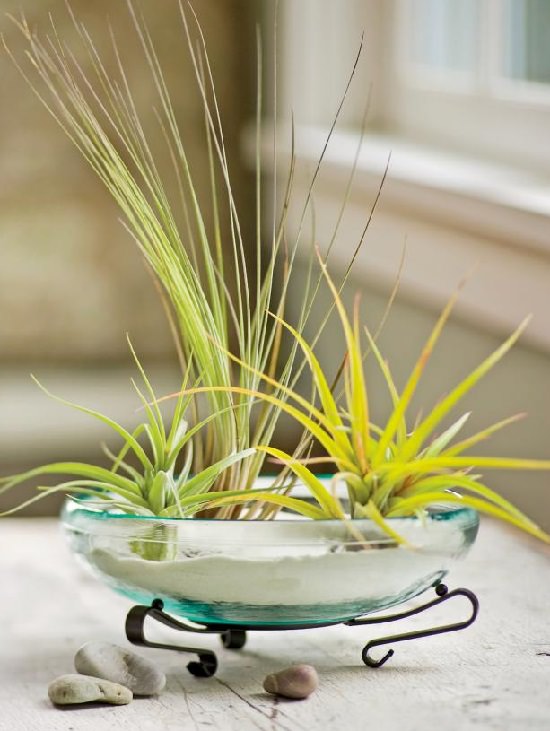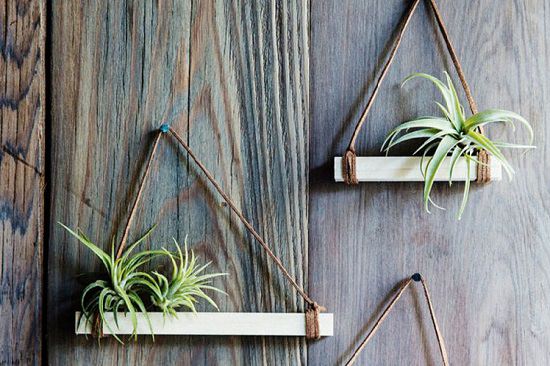How to care for air plants? Read this article to learn everything you need to know to grow beautiful air plants!
Air plants have many benefits that exceed beautifying a home or office. You can place them in your rooms to make a more peaceful environment. The plants are known to alleviate stress and to help people get more productive in their workplaces. Inside your home, they will help in purifying and filtering the air that you and your family breathe, in addition to capturing the harmful toxins and chemicals.
In fact, most people suffer from allergies and illnesses that result from long exposure to irritants like candles, incense, aerosol-based cleaning products and potpourri. Luckily, air plants reduce the effects of such products, including coughing, sneezing, watery and itchy eyes by around 30 percent and reduce skin dryness by around 20 percent. In other words, air plants will make you feel and look better.
How to Care for Air Plants
Air plants have many benefits, but they are also among the plants that are easier to care for. To start growing the plants, you will not need any soil because they absorb nutrients and from the air. However, as you expect with orchids and succulents, keeping the plants alive can be hard. You will mostly see some plants browning due to thirst. Here is what to do if you want your air plants to grow in the best way possible.
Lighting
You should keep air plants in a place where they can receive bright and indirect sunlight. Also, you can place them under fluorescent lighting inside your office or home. Direct sunlight will be beneficial to the plants, but several hours of hot sun will wither them. If your plants will get a lot of direct sunlight, consider misting them after every few days to prevent dehydration.
Watering
Air plants do not grow in soil, but watering is important for their survival. The plants can survive for long periods without water, but during such periods, they will not thrive or grow and if the water is scarce, they will eventually die. The plants are forgiving and require little care.
To water them, rinse them thoroughly under running water. The other method involves soaking them in a cold-water bath for around 20-30 minutes. Use the sink, a bowl or your bathtub if you have a large number of plants. Shake the plants gently after soaking them to get rid of any excess water from their leaves and base. Finally set them out to dry in a place with adequate air circulation for at least 4 hours. If in-between watering is necessary, use a spray bottle to spray the plants. Avoid submerging them if they are already in the blooming stage and rinse them instead. The flowers are delicate and you should be careful when handling them.
Water the plants at least once a week. For optimal care, water them 2-3 times in a week. Long 2-hour soaks are recommendable after every 2-3 weeks. People who live in hot, dry climates should water or mist their plants more frequently. Watering facilitates the development of stiff leaves full of water. Dehydrated air plants are usually light in color and soft. In worse cases of dehydration, the plants will boast rolled and wrinkled leaves.
Temperature control
Air plants thrive better in warm conditions. Try to maintain the temperature between 50 and 90 degrees.
Grooming and maintenance
Each air plant will need some grooming from time to time. Some leaves will dry out as your plants grow or acclimate to new environments. Gently pull such leaves off the plant. Snip leaf tips off as they dry — trim at an angle to create natural-looking tips and do the same for the roots. Do not worry about harming the plant when grooming because it will regrow.
Add some fertilizer
Fertilizing is not necessary for air plants, but it will help maintain them in the right shape and enhance blooming and reproduction. Use water-soluble fertilizers at ‘A-strength for good results.
Clump the plants
Air plants will grow into clumps. So, leave the pups to grow on the main plant. Alternatively, you can wire several plants together to make clumps. When wired together, air plants grow around each other. You can use any container as the home for your plants. However, ensure that the air circulation is adequate. Avoid keeping them in enclosed containers for a long time.



